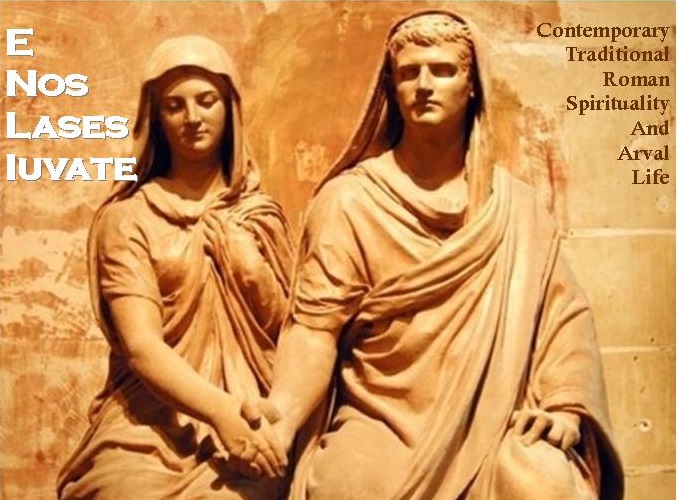This month is entirely devoted to the sacralization of the universal female polarity manifesting her force both in microcosm and in macrocosm. We call "female polarity" that centripetal, coagulating, generating, creating force permeating everything in opposition to that polarity we call "male polarity" being a centrifugal, dissolving, destroying force.
Each individual has both polarities: the perfect being, the Androgyne Rebis, can show simoultaneously these two forces.
For this reason June is therefore a female month by definition during which this energy, pertaining both men and women, is celebrated. In a more profane sense, June is essentially dedicated to women.
Juno has his name from Juno a great Goddess representing the
sacralization of the female being, the Jupiter's female polarity with who she shares the simbology of authority, preminence, majesty, heights.
Juno represents marriage,
fertility, birth and motherhood. Her sacred ministress, the flaminica -
the flamen Dialis' wife (Jupiter Minister) every first day of the
month, sacrificed to Juno a white heifer to ask protection for women.
Sacred animals for Juno are: goose and crow.
Sacred animals for Juno are: goose and crow.
The sacred tree of Juno is the oak.
Examples of Juno's Indigitamenta:
- Juno Fluonia - sacralization of menstruation
- Juno Domiduca - sacralization of the movement of the young wife to her new house
- Juno Cinxia - sacralization of the opening of the young wife belt after the marriage
- Juno Juga e Iunxia - sacralization of wedding
- Juno Lucina - sacralization of birth
Juno is the female polarization of the Genius.
Every man has his own Genius or his spiritual and invisible copy who
keep the material part alive. In the same way every woman has her own
Juno.
Juno and Genius give to individuals suggestions and advices, force, energy and determine individual attitude. At every birthday men and women celebrate their respective Genius or Juno.
Juno and Genius give to individuals suggestions and advices, force, energy and determine individual attitude. At every birthday men and women celebrate their respective Genius or Juno.






